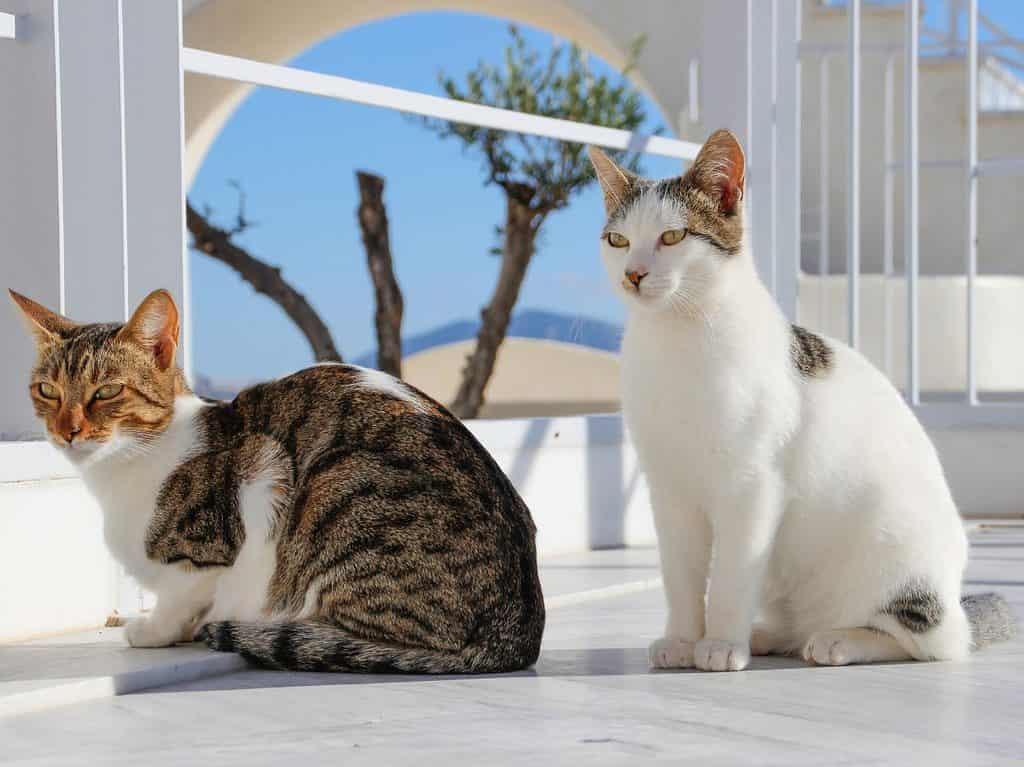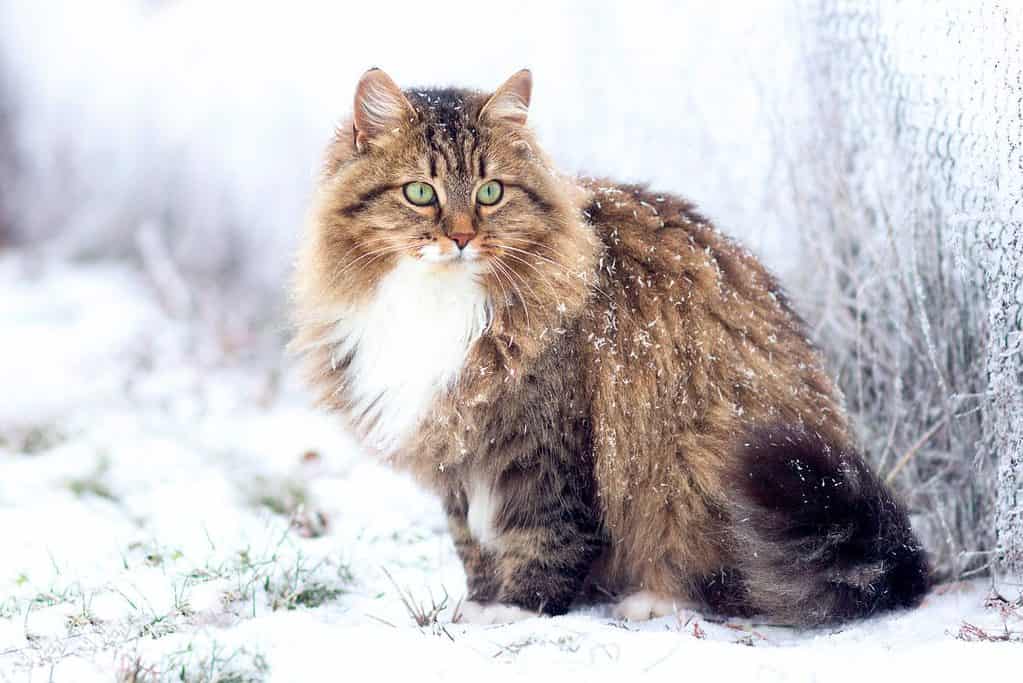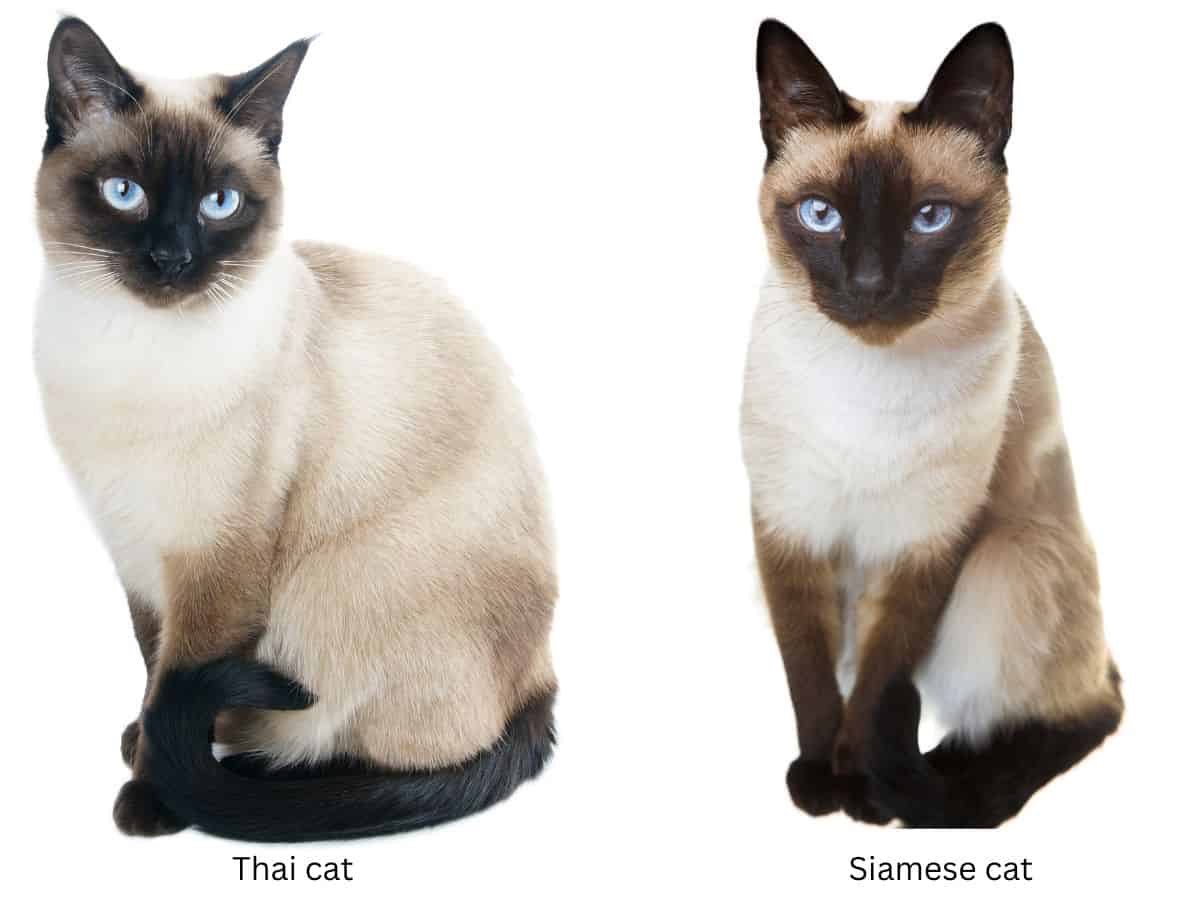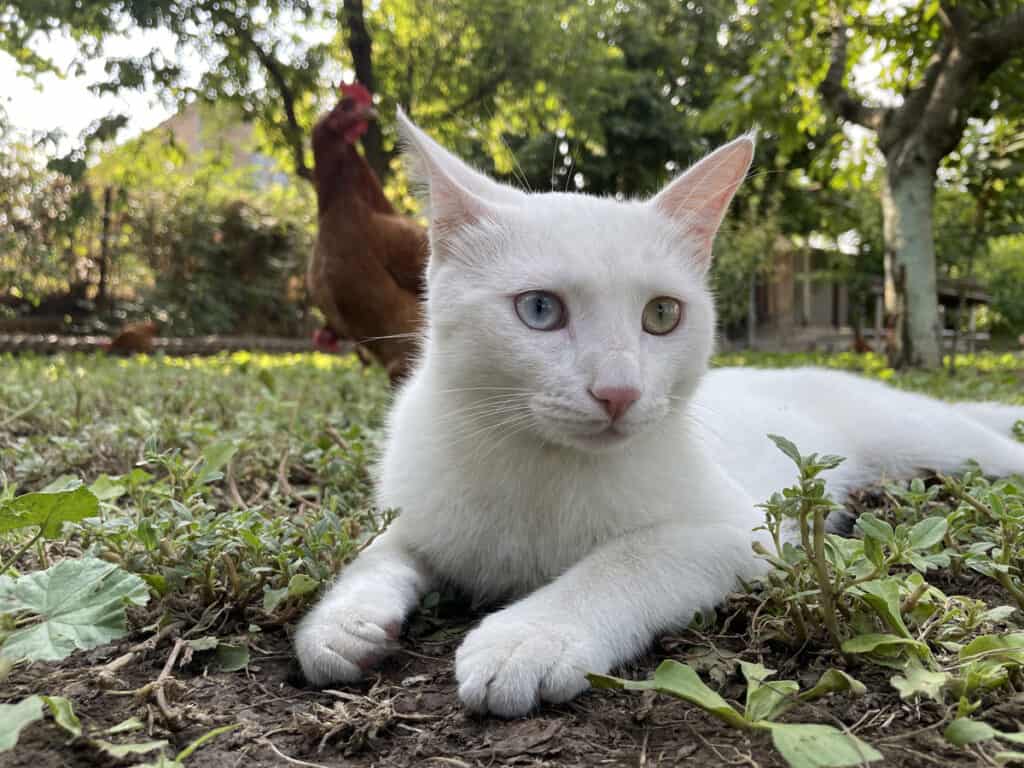A landrace is a domesticated animal breed that has developed over time through adaptation to a specific geographic region and way of life. This typically happens through a process of natural selection, where individuals with characteristics that are better suited to the local environment are more likely to survive and reproduce.
In cats, landrace refers to cat breeds that have developed naturally over time in a particular region, rather than being deliberately bred by humans for specific traits.
Landrace cats, also known as natural cats, typically have unique physical characteristics and behaviors that are well-suited to their native environment.
Cat breeds that are landraces
There are many different breeds of cats that could be considered landraces, as the term is used to describe breeds that have developed naturally over time in a particular region.
Some examples of landrace cats discussed in this article are the Aegean cat from Greece, the Maine Coon from the United States, the Siberian from Russia, the Thai cat from Thailand, and the Van cat from Turkey
These cat breeds are all known for their unique physical characteristics and behaviors, and they have adapted to their native environments over time.
Aegean cat
The Aegean cat is a breed of cat is native to the Cycladic Islands of Greece and western Turkey which are situated in the eastern part of the Aegean Sea.
The Aegean cat is believed to have originated from the domestic cats that were brought to the Aegean islands by ancient seafarers, who may have included the ancient Greeks, Phoenicians, and Egyptians.
Over time, these cats adapted to the unique environmental and cultural conditions of the Aegean islands, developing physical and behavioral traits that set them apart from other cat breeds.

One of the most distinctive physical features of the Aegean cat is its coat, which is typically short and silky, with a unique pattern of stripes and spots that is specific to the breed. This coat is believed to have evolved as an adaptation to the hot and dry climate of the Aegean islands, which can be quite harsh in the summer months.
The coat of an Aegean cat typically has some level of white spotting. The eyes of the Aegean cat are almond shaped and can come in a variety of colors.
In terms of behavior, Aegean cats are known for their intelligence, playfulness, and affectionate nature. They are also skilled hunters and are often kept as working cats in homes and businesses throughout the Aegean islands.
Maine Coon
The Maine Coon breed originated in the state of Maine in the United States, where it is thought to have developed through natural breeding between domestic cats and other wild cats.

Maine coons are known for their large size, long fur, tufted paws, and bushy tail, which are thought to have developed through the Maine Coon’s adaptation to the cold climate of its native region.
These characteristics, along with the breed’s friendly and intelligent personality, have made the Maine Coon a popular cat breed choice.
Siberian cat
The Siberian cat originated in Russia, where it is thought to have developed through natural breeding between domestic cats and other wild cats. Siberian cats are native to the forests of Siberia and are adapted to the harsh and variable climate of that region.
The breed is known for its long, thick fur, robust and muscular build, and large, tufted paws that provide traction on the snow and ice during the winter months. Siberian cats grow a triple coat for the extremely cold winter months and shed this coat for the milder summer Siberian season.

The oldest known reference to the Siberian cat dates back to 1000 A.D.
Thai cat
The Thai cat or Wichianmat cat is a landrace cat that is native to Thailand.
Thai cats are short-haired cats with blue eyes and darker points around the extremities such as the tail, paws, face, and ears. The body of the Thai cat is a whitish brown color.
Also known as “Old-Style Siamese”, the Thai cat is a colorpoint cat similar to the Siamese cat but the points are more moderate in coloration.
What is the difference between a Thai cat and a Siamese cat?
One way that Thai cats can be distinguished from Siamese cats is based on the shape of their heads. Thai cats are also known colloquially in the United States as “appleheads” because of the rounded shape of their heads. Siamese cats have more extreme features and a long face.

Thai cats also have a rounder body compared to the leaner physique of the Siamese cat.
Thai cats are a medium to large breed of cat and weigh between 7-9 pounds for females and 9-12 pounds for males. Siamese cats are a small to medium breed of cat with females weighing between 5-8 pounds and males weight between 8-12 pounds.
Van cat
The Van cat is a breed of domestic cat that is native to the Van region in eastern Turkey. This region is situated around Lake Van, which is one of the largest lakes in Turkey and has a unique environment with distinct seasonal changes and varying weather patterns.

The Van cat has evolved in this environment over a long period of time, adapting to the local climate and the cultural practices of the people who live in the region. For example, Van cats are known for their thick, water-resistant fur, which helps them to stay warm in the cold winters and also makes them good swimmers.
Van cats are known for their all-white coats, which for some can be accented by some small colored markings on their heads and tails. They are medium to large-sized cats, with a muscular build and strong, athletic bodies.
One common feature of the Van cat is the fact that many of them have differently colored eyes. One eye may be blue and the other amber. This condition, known as heterochromia, is relatively common in Van cats.
Watch: what are landrace cats?
References
Ilhan, Z., Karaca, M., Ekin, I. H., Solmaz, H., Akkan, H. A., & Tutuncu, M. (2016). Detection of seasonal asymptomatic dermatophytes in Van cats. brazilian journal of microbiology, 47, 225-230. https://doi.org/10.1016/j.bjm.2015.11.027
Settimo, L. M. (2015). Cat breeds: The Thai cat breed. Rassegna di Medicina Felina, 19(1), 24-28.







